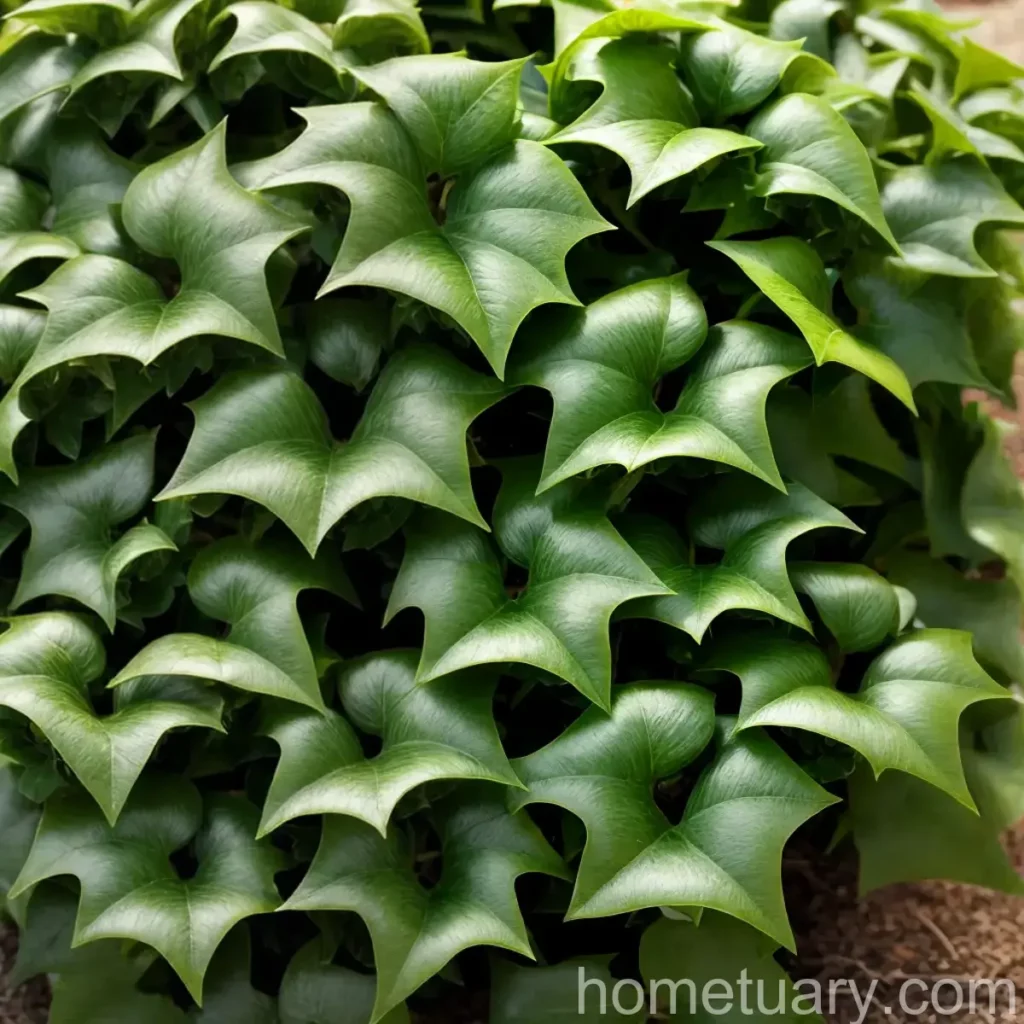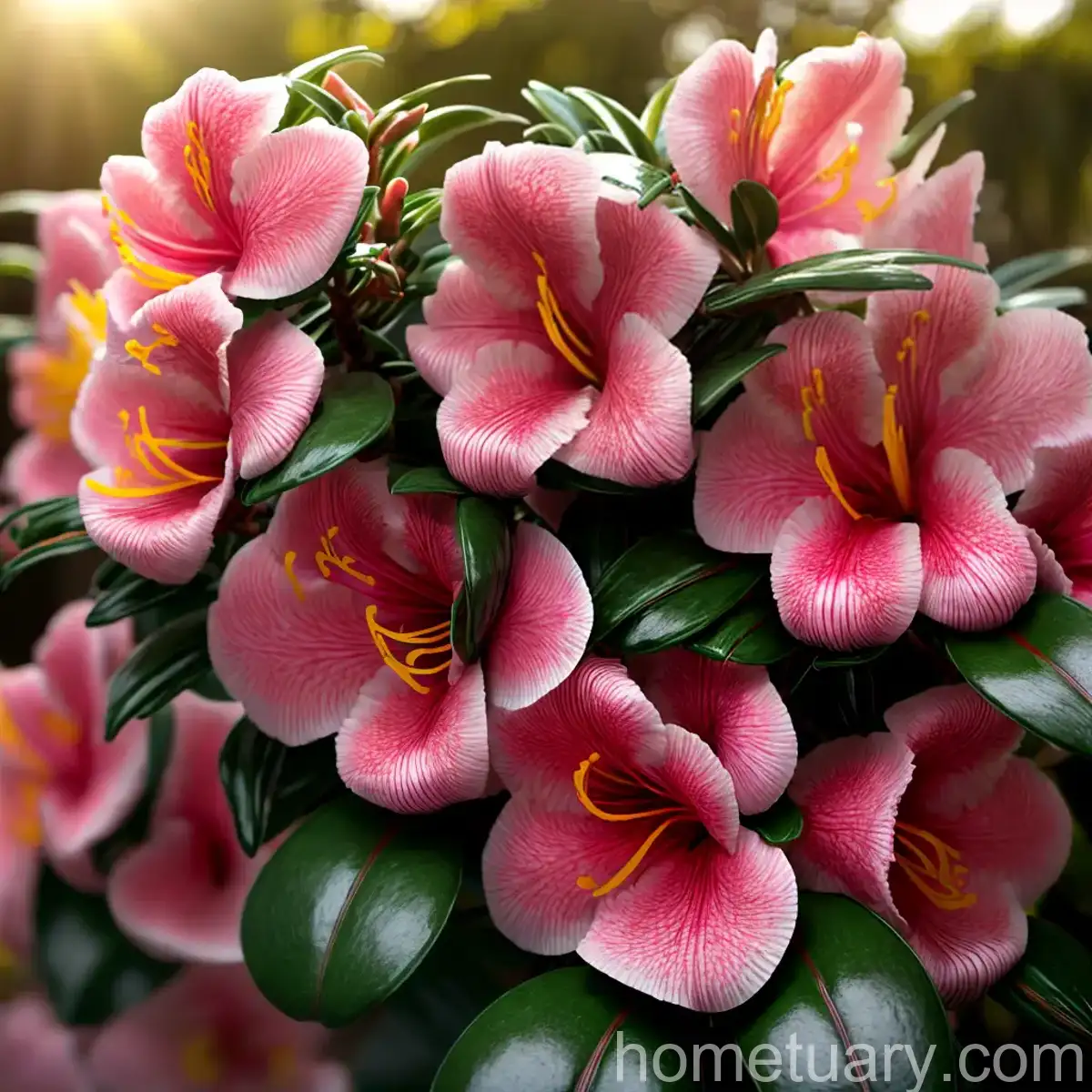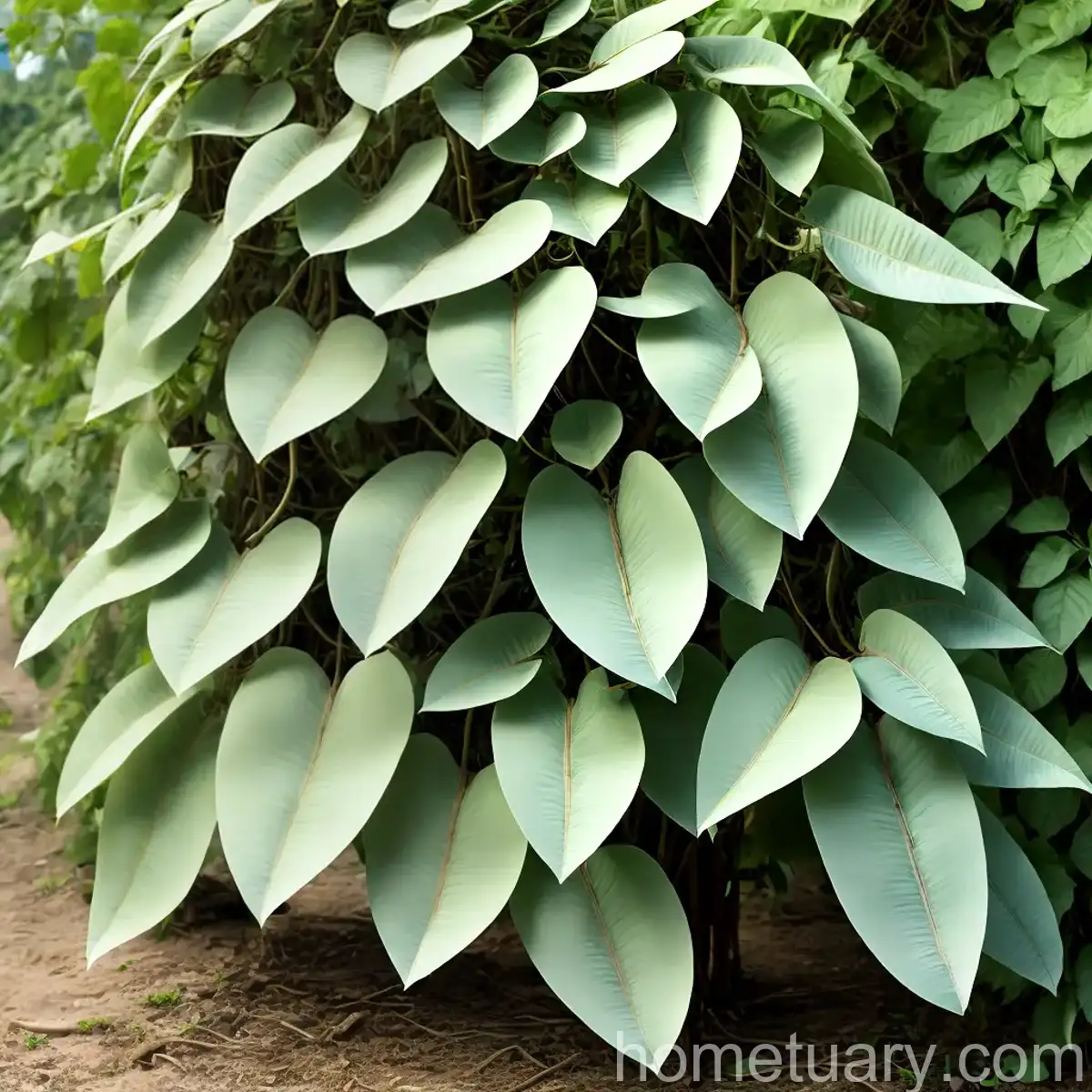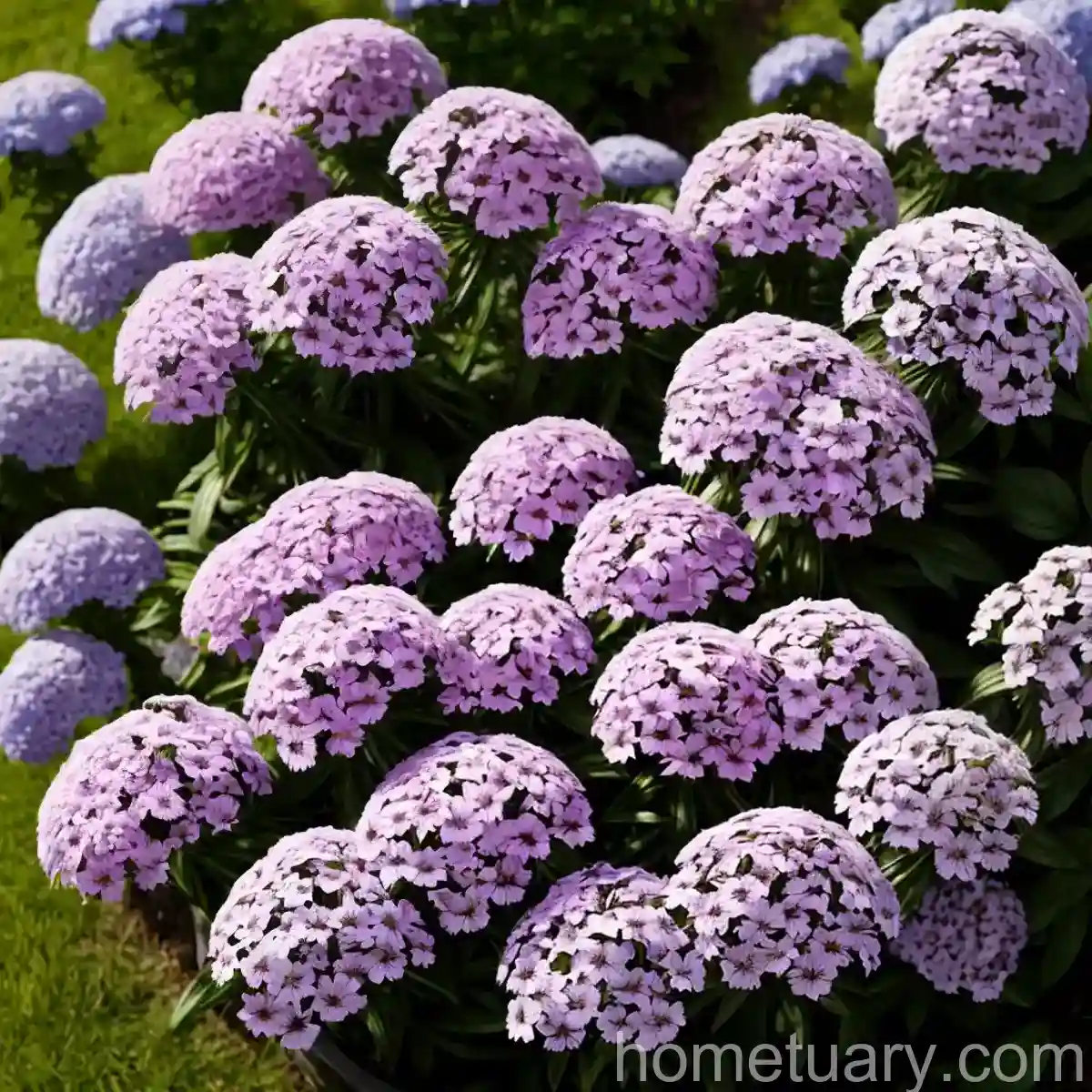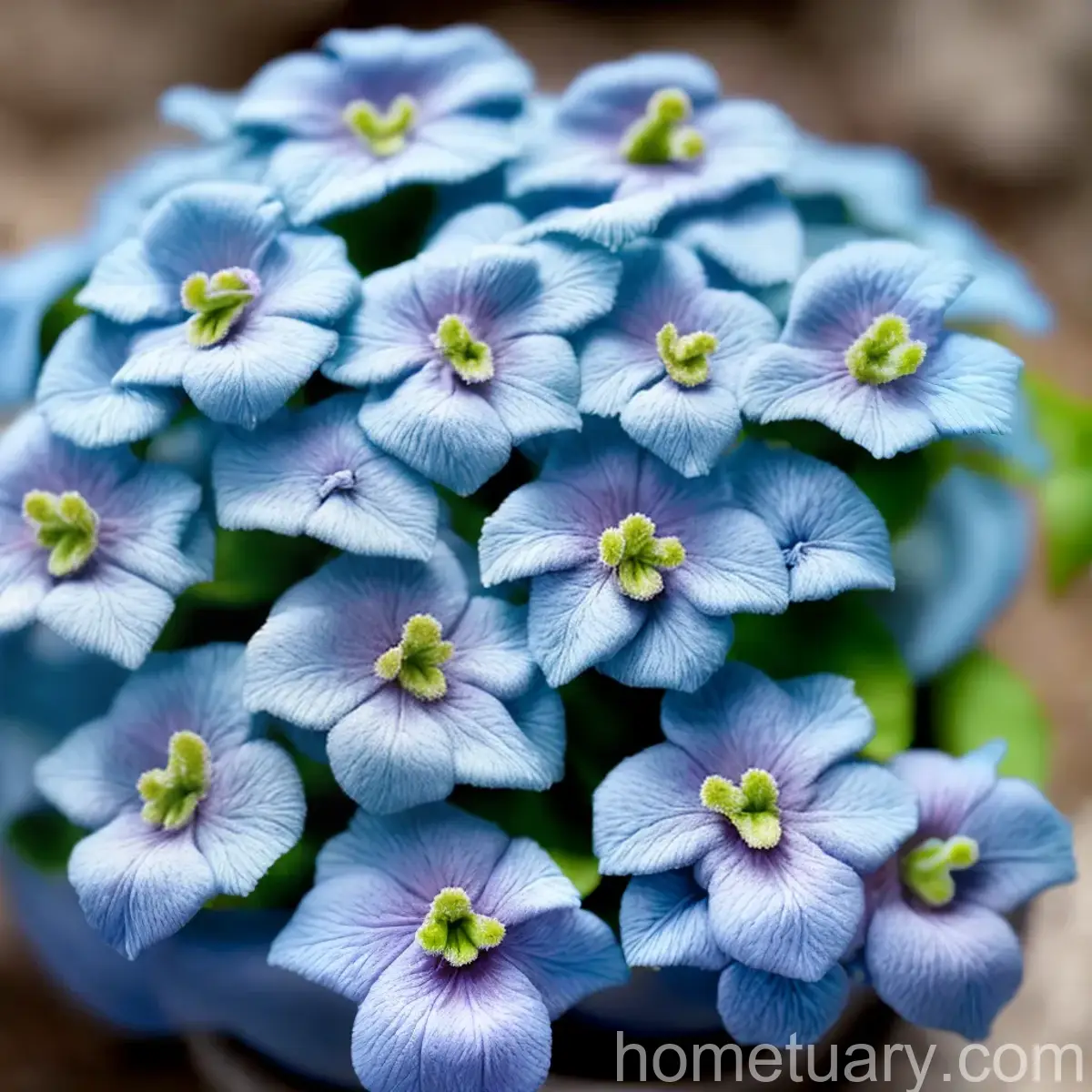English Ivy (Hedera helix) – A Complete Guide
Plants hold a special place in our lives. Whether they are used for decoration, landscaping, air purification, or even for medicinal purposes, plants significantly contribute to the overall well-being of the environment and the people around them. One such versatile plant that has garnered attention for its aesthetic appeal and various uses is English Ivy, scientifically known as Hedera helix. In this comprehensive guide, we will delve into the intricate details of this plant, including its culture, uses, care requirements, and common diseases and pests that affect it.
What is English Ivy (Hedera helix)?
English Ivy, or Hedera helix, is a species of flowering plant in the family Araliaceae, native to most of Europe and Western Asia. It is a clinging evergreen vine with small, leathery, dark-green leaves that have a glossy texture, making it a popular choice for ground cover, climbing, or as an accent to other plants. It is known for its ability to thrive in various conditions and has been a part of landscaping and gardening for centuries.
Key Takeaways – English Ivy (Hedera helix)
Before we delve into the specifics of caring for English Ivy, let’s go over some key takeaways about this versatile plant:
- Scientific Name: Hedera helix
- Common Names: English Ivy, Common Ivy
- Type: Evergreen climbing or ground-cover plant
- Uses: Landscaping, air purification, medicinal properties, ornamental purposes
- Characteristics: Small, leathery, dark-green leaves with a glossy texture; clinging vine
- Hardiness Zone: 4-9
- Sunlight: Partial shade to full shade
- Watering: Moderately moist soil; avoid overwatering
- Soil Type: Well-draining, rich, and slightly acidic soil
- Propagation: Seeds, stem cuttings, or layering
- Common Diseases: Anthracnose, bacterial leaf spot, and root rot
- Common Pests: Spider mites, aphids, and scale insects
Culture
Understanding the cultural requirements of English Ivy is essential for ensuring its healthy growth. From its water and sunlight needs to its soil and fertilizer requirements, each aspect plays a crucial role in nurturing this resilient plant.
Uses
English Ivy serves a multitude of purposes, making it a highly sought-after plant in the world of landscaping, gardening, and even for its potential health benefits. Let’s explore some of its common uses:
- Landscaping: English Ivy is commonly used as a ground cover to add an elegant touch to gardens, walkways, or landscapes. It also serves as a climber, adding a unique visual element to walls, trellises, and fences.
- Air Purification: Studies have shown that English Ivy has air-purifying properties, making it a popular choice for indoor environments. It is known for its ability to remove certain airborne toxins and improve air quality.
- Medicinal Properties: In traditional medicine, English Ivy has been used for its potential medicinal properties, including its use in cough syrups and treatments for respiratory conditions.
- Ornamental Purposes: Its luscious green foliage and trailing vines make it an attractive addition to indoor and outdoor spaces, adding a touch of natural elegance to any setting.
Water
Proper watering is crucial for the health and vitality of English Ivy. While it can tolerate some degree of dryness, consistent and adequate moisture is essential for its overall well-being.
Watering Tips for English Ivy:
- Water the plant when the top inch of the soil feels dry to the touch.
- Ensure that the soil is well-draining to prevent waterlogging, which can lead to root rot.
- During the growing season, water regularly, but allow the soil to dry out slightly between waterings.
- In winter, reduce watering frequency, but do not let the soil completely dry out.
Sunlight
English Ivy thrives in partial to full shade, making it an excellent choice for areas with limited direct sunlight. Understanding its sunlight requirements is crucial for ensuring optimal growth and foliage development.
Sunlight Requirements for English Ivy:
- Place English Ivy in an area with indirect or filtered sunlight. Avoid exposing it to direct sunlight for prolonged periods, as it can lead to leaf scorching.
- Indoors, choose a location with bright, indirect light. Northern or eastern-facing windows are ideal for maintaining the plant’s health and vigor.
- Outdoors, consider planting English Ivy underneath trees or in areas with dappled shade to provide the necessary light conditions for its growth.
Fertilizer
Proper fertilization is essential for promoting healthy growth and lush foliage in English Ivy. Understanding the right fertilization regimen is crucial for maintaining the plant’s vigor and vitality.
Fertilizer Needs for English Ivy:
- Use a balanced, water-soluble fertilizer designed for foliage plants, diluted to half the recommended strength.
- Apply fertilizer to English Ivy during the growing season, typically from spring to early fall, at a frequency of once a month.
- Avoid over-fertilizing, as it can lead to excessive vegetative growth at the expense of the plant’s overall health.
Soil
The right soil composition and quality play a significant role in the overall health and growth of English Ivy. Understanding the soil requirements is crucial for creating an optimal growing environment for this versatile plant.
Best Soil for English Ivy:
- Choose a well-draining potting mix or garden soil with a slightly acidic to neutral pH.
- Incorporate organic matter such as peat moss or compost to improve soil structure and fertility.
- Avoid heavy or compacted soils, as they can lead to waterlogging and hinder root development.
Pruning
Pruning plays a crucial role in maintaining the shape, size, and overall health of English Ivy. Understanding the proper pruning techniques and timing is essential for promoting vigorous growth and controlling its spread.
Pruning Techniques for English Ivy:
- Regularly trim and pinch back the growing tips to encourage bushier growth and prevent legginess.
- Remove any dead, damaged, or yellowing leaves to maintain the plant’s aesthetic appeal and overall health.
- Prune back overgrown or unruly vines to keep the plant within the desired boundaries.
Propagation
Propagating English Ivy allows for the expansion of its presence in a garden or indoor setting. Understanding the various propagation methods and their requirements is essential for successfully propagating this resilient plant.
Propagation Methods for English Ivy:
- Stem Cuttings: Take 4-6 inch (10-15 cm) stem cuttings from the actively growing vines, ensuring each cutting has at least two nodes. Place the cuttings in a well-draining rooting medium and provide the necessary warmth and humidity for root development.
- Seeds: Collect the seeds from mature English Ivy berries and sow them in a well-prepared seed-starting mix. Provide warmth, moisture, and light for successful germination.
- Layering: Encourage the development of roots on the trailing vines of English Ivy by burying a section of the vine in the soil while keeping the rest exposed. Once roots have formed, separate the newly rooted section from the parent plant.
Container Popularity
English Ivy’s versatility and resilience make it a popular choice for container gardening, both indoors and outdoors. Its trailing growth habit and elegant foliage make it a charming addition to any container garden.
Container Gardening with English Ivy:
- Choose a well-draining container with adequate drainage holes to prevent waterlogging.
- Use a high-quality potting mix with added organic matter to provide the necessary nutrients and soil structure for the plant’s growth.
- Consider using English Ivy as a trailing element in mixed container plantings to add visual interest and texture.
Common Diseases
While English Ivy is a resilient plant, it is susceptible to certain diseases that can affect its overall health and appearance. Understanding these diseases and their symptoms is essential for timely intervention and management.
Disease Diagnosis
English Ivy is susceptible to several common diseases, including:
- Anthracnose: This fungal disease causes dark, irregular lesions on the leaves, leading to defoliation and overall decline in plant health.
- Bacterial Leaf Spot: Characterized by dark, water-soaked spots on the leaves, this bacterial disease can spread rapidly, particularly in humid conditions.
- Root Rot: Overwatering or poor drainage can lead to root rot, characterized by wilting, yellowing, and eventual collapse of the plant.
Preventing and Managing Diseases:
- Ensure proper air circulation and avoid overhead watering to minimize the risk of fungal and bacterial diseases.
- Remove and destroy infected plant material to prevent the spread of diseases.
- Adjust watering practices to avoid prolonged soil moisture, which can contribute to root rot.
Common Pests
In addition to diseases, English Ivy can also fall victim to certain pests that can affect its foliage and overall health. Understanding these common pests and their management is crucial for maintaining the plant’s vitality.
Common Pests of English Ivy:
- Spider Mites: These tiny pests can cause stippling and yellowing of the leaves and are commonly found in dry indoor environments.
- Aphids: These soft-bodied insects feed on the sap of the plant, leading to distorted growth and the development of sticky honeydew on the leaves.
- Scale Insects: These small, immobile pests can attach themselves to the stems and leaves, sucking the plant’s sap and causing stunted growth.
Pest Management:
- Use a strong blast of water to dislodge and remove spider mites and aphids from the plant.
- Consider using insecticidal soap or neem oil as organic pest control measures against common pests.
- Monitor the plant regularly for signs of pest infestations and take prompt action to prevent widespread damage.
Botanist’s Tips
To ensure the successful growth and maintenance of English Ivy, consider the following tips based on botanical expertise and practical experience:
- Air Circulation: Provide adequate air circulation, particularly in indoor settings, to minimize the risk of fungal and bacterial diseases.
- Regular Monitoring: Routinely inspect the plant for signs of pests, diseases, or nutrient deficiencies to address any issues promptly.
- Consistent Care: Maintain a consistent watering and fertilization schedule to support the plant’s growth and vitality.
Fun Facts
Enhance your appreciation for English Ivy by learning some fascinating and little-known facts about this versatile plant:
- English Ivy has a long history of use in traditional herbal medicine for conditions such as coughs and bronchitis.
- In addition to its air-purifying properties, English Ivy has been found to effectively remove certain volatile organic compounds (VOCs) from indoor air.
- The distinctive lobed leaves and trailing growth habit of English Ivy make it a favorite choice for creating green walls or living tapestries in contemporary architecture and design.
Links to External Resources
For further information about English Ivy (Hedera helix) and related topics, consider exploring the following external resources:
- The Spruce – How to Grow and Care for English Ivy Plants
- RHS – Hedera helix (English Ivy)
- University of Florida – English Ivy (Hedera helix)
- Missouri Botanical Garden – Hedera helix
- American Society for the Prevention of Cruelty to Animals – Toxic and Non-Toxic Plants: English Ivy
As a versatile and adaptable plant, English Ivy continues to captivate plant enthusiasts and gardening aficionados with its inherent charm and numerous practical uses. By understanding its cultural requirements, common issues, and optimal care practices, you can foster the healthy growth and longevity of English Ivy in your garden or living space.
In conclusion, whether you are drawn to its aesthetic appeal, air-purifying properties, or traditional medicinal uses, English Ivy stands as a testament to the enduring allure of plants and their profound impact on our lives. As we continue to appreciate and explore the remarkable qualities of English Ivy, may its timeless elegance and resilience continue to inspire our connection with the natural world.

